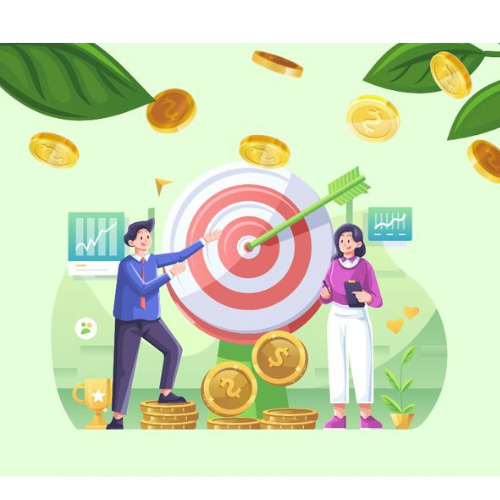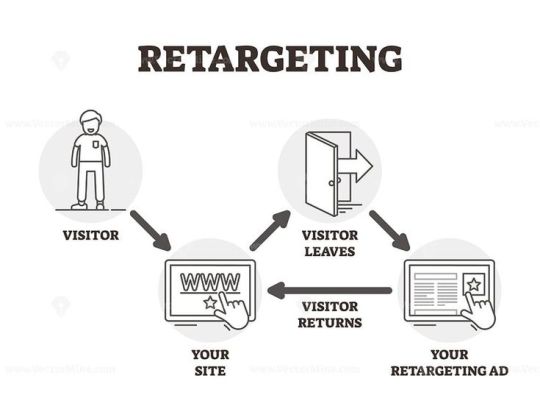#Prakartik Sparsh
Explore tagged Tumblr posts
Text
Maximizing ROI: Digital Marketing Best Practices for Small Businesses
In the ever-changing digital marketing landscape, a company such as Parkartik Sparsh must zero in on strategies that yield the highest possible return on investment. After all, as a travel and experiences business, you really need to get the right message in front of the right people so that the interest converts into a booking. Using cost-effective and data-driven approaches to face digital marketing will ensure that every marketing dollar invested generates the best results in terms of generating engagement as well as increasing sales. Leveraging tactics such as segmented social media campaigns and bettering the website for local SEO, Parkartik Sparsh will not just attract travelers but also build long-term brand loyalty.
Small businesses should be very wise about investing in marketing in this fast-changing digital world. There isn't a lot of budget to finance each activity, so the return on investment needs to be maximized from every dollar. Digital marketing introduces new tools and strategies for competing with bigger companies. By doing these best practices to their business, organizations can see if it gives them competitive edge. In this blog, we will talk about best practices in digital marketing for the small business to allow it to maintain cost-effective and profitable growth.
1. Set Specific, Measurable Goals:
Most small businesses are very unclear about where to focus their efforts. Do you want to drive more traffic onto your site, gain more leads, or enhance online sales? Now that you know what you are trying to achieve, you can decide what the rest of your strategy should be and you will be able to measure your success better.

2. Use Data-Driven Insights:
Data is at the heart of good digital marketing. You will want to measure the following: website visits, CTR, conversion rates, and customer acquisition costs. By employing tools like Google Analytics or marketing automation platforms, you can monitor performance and make adjustments to the campaign from the vantage point of performance.
This helps in analyzing the data in order to determine which tactics provide the best ROI. So, resources can be reallocated more into effective strategies. You can optimize your efforts all the more if you know more about your customers and their behavior.
3. Focus on SEO to Improve Organic Traffic:
With search engine optimization, you are able to market your web presence without necessarily having to spend plenty of money on advertisements. When you optimize your website to a search engine, the chances of appearing on top or near the top among search results are much higher, therefore garnering more organic traffic.
SEO Best Practices Use relevant keywords, in line with what your audience is searching for Devise content that is valuable, high-quality while answering all the general questions which the customers have. Optimize site's speed and mobile-friendliness. Create backlinks from other sites having a good reputation that will help to increase your domain authority. The ROI by using SEO is not instant but when you rank well, they can bring in consistent traffic over a long period of time.
4. Social Media as Targeted Marketing:
Social media is one of the most powerful reach tools to your audience where it spends their time. Among others, by using Facebook, Instagram, and LinkedIn, you have the ability to push campaigns that are targeted to demographics and locations, interests, etc.
For small businesses, that is an advantage in social media marketing-the ability to run highly targeted ad campaigns with even the smallest budget, so you know you're only paying to reach the most relevant audience for you.
Key Tips:
Use pay-per-click advertising to drive more posts or create targeted ads. Comment and direct message followers. Utilize user-generated content and testimonials for endorsements.

5. Email Marketing:
A Low-Cost High Return Strategy Email marketing is often touted as one of the most rewarding of the digital channels in terms of return on investment. Using Mailchimp or HubSpot, small businesses can build segmented email lists and send a customized series of messages nurturing leads, building relationships, and turning prospects into paying customers.
Maximize the ROI from Email Marketing-list growth by getting the right kind of subscriber; mail your customers based on their behavior and preferences, optimizing subject lines and content along with the call-to-action button using A/B testing; automate your welcome sequences, abandon cart reminders, and post-purchase follow-ups.
6. Local SEO:
A properly prepared Google My Business profile, collection of reviews, and normalization of your Name, Address, Phone Number in the listings will ensure your business's gradual progress through the ranks in the world of local search.
Local SEO can target all those potential customers who seek products or services that are available in their area, making it even more effective for driving foot traffic or local online conversions.
7. Using Retargeting Campaigns:
Retargeting is one of the strongest strategies in digital marketing, targeting people who have already expressed interest in your business. With pixels or cookies, you may opt to show ads to those who visited your site but never followed through and converted, and try to coax them back to engage in the action that they almost completed-for instance, make a purchase or fill up a form.
It is so because retargeting ads are those that can appear to the people already aware of your brand, meaning there will be a higher prospect of conversion; this is one strategy that will enable you to utilize your marketing budget in the most effective way possible.

8. Mobile-Friendly Optimization:
More than half of all internet traffic in the world is coming from mobiles; hence you will need to optimize your digital marketing for a mobile. In addition to that, mobile-friendly content like SMS marketing and mobile-friendly templates for the emails can provide a better user experience, result in a higher engagement rate, and therefore a good return on investment.
9. Quality Content Marketing:
Marketing is yet another low-cost option that provides great ROI. Creating high-quality and informative content can enable your business to position itself as an authority within your niche and attract organically.
Whether it's a blog post, an infographic, or a video, be sure you are providing a value add to the table for your audience. Of course, content marketing can be great to boost your SEO, but it also plays well with the trust and credibility issue with potential customers.
Pro Tip: Run your content on multiple platforms to maximize the shelf life.

10. Strikingly Regular Campaign Analysis and Reading justification:
Optimize ROI always requires optimization. Check your campaigns often, looking at the data that measures how you have done and what one can decide to inject more money in your marketing budget by any area of investment that requires improvement. Look at what works and what does not work, and make necessary alterations to be sure your strategy remains efficient and effective.
Conclusion
The world of online marketing is very vast, offering room for really huge development and competitiveness for small businesses in a really crowded marketplace. And by following on with the best practices described in the following steps, that are founded on data-driven decision-making, you can optimise your ROI so that every marketing dollar spent counts.
Start small, try different things, scale what works best for your business.
0 notes
Text
How to Develop a Content Marketing Plan
Content marketing is the backboned promotion of brand awareness, engagement with your target audience, and conversion. Whether you sell handmade soap products like "Prakartik Sparsh" or any other niche product, creating a content marketing plan requires careful planning, execution, and continuous optimization. Understanding your target segment allows you to create content that highlights the inherent benefits of products like "Prakartik Sparsh" and will, therefore, attract a devoted set of customers. Here is a guide to help build a solid content marketing strategy.
Define Your Goals Define your goals. The first important step to any content marketing strategy, your chances of success depend largely upon a clear understanding of what you're trying to accomplish. Some of the most general content marketing goals include the following:
Increase Brand Awareness: Establishing your brand as an industry authority. Generate Leads: Attract potential customers and guide them through a sales funnel. Drive Website Traffic: Bring in more visitors. Engage Your Audience: Convert your customers into fans of your content.

Knowing Your Target Audience But all of this has to be preceded by the understanding of the needs, preferences, and challenges of the audience. And how might this come about?
Developing Buyer Personas: Creating fictional profiles that represent various segments of your target audience.
Market Research: Use surveys, social media analytics, and interviews with customers to determine your audience demographics, behavior, and interests.
3. Conduct a Content Audit Before you begin to create new content, review the existing content that you have. Learn what works and does not. You will be able to discover which gaps exist and what opportunity you might be able to have by either repurposing or improving your content. A content audit should:
Measure Performance: Monitor the performance of previous content using engagement, traffic, and conversion metrics. Identify Gaps: Bring to the fore subjects that your competitors are doing much better than you.
4. Content Strategy: Your content strategy is a roadmap that stipulates what content you will create, when you will publish it, and how it relates to business goals. Consider:
Content Types: Choose which topics will resonate well with your audience: blogs, videos, infographics, or podcasts.
Calendar Content: Schedule and plan to have a consistent posting schedule. This calendar not only keeps your team on track but also allows you to know where you stand. -Content Topics: Identify the suitable topics for your content that would be relevant to your target and helps you achieve your goal. To create optimum content topics, use such tools as Google Trends, AnswerThePublic, and keyword research to find topics that people are seeking information on.

5. High-Quality Content Success today calls for high quality. Your content will have to be both informative and entertaining. Your content has to be relevant. What constitutes a good content piece?
Provide Value: Address their pain points and provide solutions in the form of actionable advice.Keep the voice and tone consistent, such as echoing your brand voice.
For SEO purposes, apply relevant keywords, meta descriptions, and internal links within the content in a way that makes it more viable for search visibility.
6. Choose your distribution channels Find the right delivery channels for the content. This can be social media, your website, email newsletters, or guest blogging on other websites. Each of them has their strengths:
Social Media: Very good for engagement and short-form content sharing.
Email Marketing: Good for relationships, as you can share exclusive content with them.
Website Blog: One central place for all your long-form content.
7. Share Your Content The final part is to share this to the right people, after creating great content. Consider this one:
Social Media Advertising: You should boost the posts in order to reach a lot of your audience. -- Influencer Partnerships: Leverage influencers for further reach. -- Community Engagement: Utilize such communities online to share your content, whether it's through industry forums or LinkedIn groups.

8. Measure and Analyze Performance Monitor your content marketing as often as you can so that you will know what works and what doesn't. Use these metrics:
-Traffic: The number of visitors who will see your content. -Engagement: Likes, shares, comments, etc.
Conversions: Leads or sales that result from your content.
Calibrate Your Strategy Content marketing is a dynamic process. Use your performance metrics to calibrate your strategy. Identify winning content and build on that topic, while trimming and eliminating content that is not working. You may ask yourself:
Which types of content do best?
What topics generate the most engagement?
Are there any content formats that are underperforming or need to be replaced?
Conclusion To build a winning content marketing strategy, you need to know what to say, create valuable content, and adjust your approach constantly based on performance. Follow these steps to build a strategy that acts as the best way to reach and resonate with the intended audience in order to drive growth for your business.
0 notes
Text
The Impact of Influencer Marketing in Today's Digital World
Social media has become part and parcel of the daily lives of modern consumers, and it is here that influential personalities with popular online followings make people share and build credibility. Therefore, it goes without saying that influencer marketing is one of the most significant powers that brands can wield today to reach their target audiences. Indeed, for handmade business ventures like Prakartik Sparsh -an online handmade soap-selling brand, influencer marketing can prove a vast boon. For, under this tie-up strategy, the brand would be able to connect with audiences who value products that are intrinsically natural and sustainable.
Influencer campaigns can show the handcrafted soaps of Prakartik Sparsh, the merits, and the usages of soaps as they share their personal usage experience with the brand for which it increases the credibility and trust among customers. This approach will increase authenticity, visibility because Prakartik Sparsh can grow organically.
Now, go ahead and check its growth online in the way that reach, engagement, and sales improved through the good word of trustworthy influencers for Prakartik Sparsh.

Authenticity and Trust Consumers today are bombarded with too much advertising - a breakthrough for the voice of traditional marketing is nearly impossible. Because authentic content has been cultivated with their followers, such recommendations are more personal and authentic. Audiences believe the views of influencers much more than that of the traditional brand advertisement because influencers express life-based experiences and reviews.
Extremely Targeted Audiences Most of the influencers are niche-specific, like beauty, travels, fitness, or technology, through which brands can reach an extremely defined target audience. Due to niches, the possibilities are much higher that the brand's product or service will reach the relevant audience who is actually interested in their offerings. For instance, a dermatological brand working along with an influencer in the beauty space can reach a specific audience directly.
Affordable Marketing Influencer marketing is less costly than the traditional types of marketing like TV commercials or billboard advertising. Micro and nano-influencers who have small but a highly engaged audience have a high ROI for small budgets. A brand can communicate with influencers at a number of scales to match its budget but still impact the marketing.
Increased Engagement and Reach Influencers have created a relationship among the followers, which means more likes, sharing, and commenting on their posts. This will set off ripples because now the brand's reach is distributed among its network as the followers share their content. Comments or even direct messages form engagement metrics with the interest of the audience in a particular brand's product or message.
Content Creation Expertise Influencers are content creators who know their way around the crafting of engaging stories about products and services. The abilities that influencers possess in producing quality visuals, videos, and posts allow the said brands to use the said material to suit their marketing campaigns. Co-creating content with influencers helps brands benefit from the creativity and authenticity of an influencer's style.
Increased Credibility and Brand Awareness Linking a brand with a highly influential and reputable influencer may increase credibility and brand awareness. Having an influencer endorse a product will bring that specific product to the attention of his or her followers, making it more recognizable to consumers. The audience feels confident about the value of the product when someone whom they may look up to, in this case, endors, the brand while creating social proof from seeing that somebody whom they care about endorsing a brand.
Increase Social Proof The social media savvy consumers usually look for recommendations and reviews prior to buying a certain product. They're more social proof because you can actually see real people using and loving the same thing. Followers might be more likely to believe a recommendation from someone they like or identify with them, increasing chances of purchase behavior.
Scalability Across Platforms Influencer marketing can't be one-size-fits-all across a single platform because it can be adapted to Instagram, YouTube, TikTok, and more. This scalability allows brands to reach audiences in multiple platforms, making it more visible and effective. Whether it's through short-form video on TikTok or in-depth product reviews on YouTube, brands can engage audiences on their preferred platforms.
Long-Term Campaigns and Brand Loyalty Long-term influencer partnerships bring the brand closer to its audience. When repeated collaborations are done, there is always an improved aspect of recall and loyalty, since followers see a consistent support from a trusted source. Long-term partnerships have a much more lasting impact than influencer posts as one-time posts.
Measurable Outcomes Influencer marketing campaigns are very trackable, along with clear metrics involving impressions, clicks, conversion, and engagement rates. Brands can track the ROI of every campaign, and depending on the data insights generated, changes can be made in strategies. Therefore, through measurement of performance, influencer marketing remains an effective and optimized tool in the digital marketing mix.
Conclusion For this reason, influencer marketing in the digital era exerts tremendous power because of its ability to create genuine connections, get the right targeted audience, and have measurable output. It is very possible to build trust with good engagement with the right influencers who are able to serve your needs.
1 note
·
View note